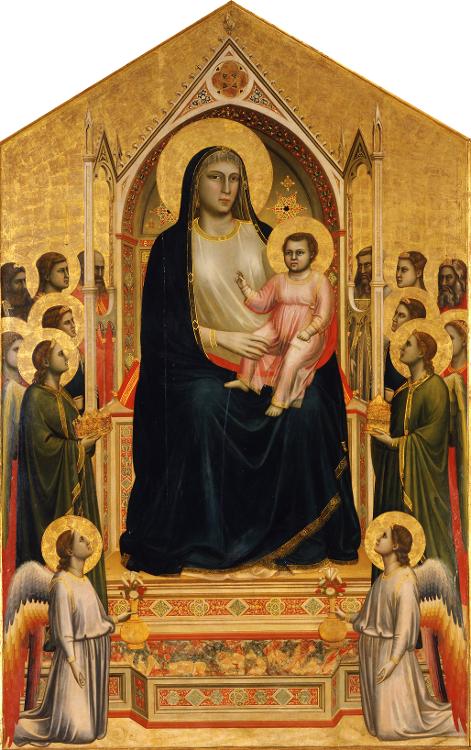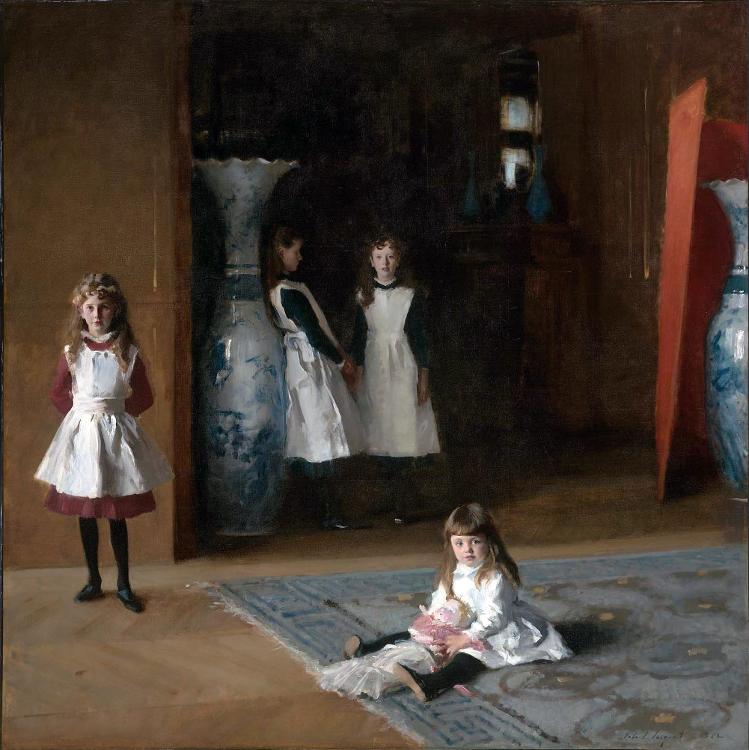Symmetrical balance
- precise correspondence of like elements on either side of a central axis
- simplest to create; most religious works
Absolute symmetry
- each side of the composition is exactly the same
- rare, mostly used in architecture
Bilateral symmetry
- each side of the composition is similar, but there are minor discrepancies between them
Asymmetrical balance
- dissimilar objects on either side of axis
- equal visual weight/eye appeal
- “informal”, casual way of obtaining balance
Radial balance
- radiates outward from central point (circular)
- more common in nature
Crystallographic balance (allover pattern)
- constant repetition of same elements everywhere on surface
Imbalance
- isn’t balanced in any way
- done on purpose most of the time

Imperial Hotel Façade (Reconstruction)
Frank Lloyd Wright, 1923
- absolute symmetry

The Last Supper
Domenico del Ghirlandaio, 1480
- bilateral symmetry

Boston Common at Twilight
Childe Hassam, 1885-86
- asymmetrical balance

Interior of the Dome at Saint Peter’s Cathedral
Michelangelo, Vatican, Rome
- radial balance

Log Cabin Quilt, Pineapple Variation
- Crystallographic balance/allover pattern

Death of a Loyalist Soldier
Robert Capa, September 5, 1936
- imbalance
Focal point
- what captures our attention; where artist wants us to look
Emphasis by contrast
- one element differs from all the others
- interrupts overall pattern, catching our eye
Emphasis by isolation
- like element set off by itself
Emphasis by scale (hieratic scale)
- largest figure/person is the most important
- common in early renaissance & early egyptian art
Emphasis by placement
- person/object at the center of the work is the emphasis/focal point
Line-of-sight
- if everyone is looking at a particular location, it will make you do the same
- implied line
Afocal
- no focal point can be determined

A Zebra
George Stubbs, 1763
- emphasis by contrast

The Agnew Clinic
Thomas Eakins, 1889
- emphasis by isolation

Enthroned Madonna and Saints
Giotto, c. 1305-10
- emphasis by scale

Feast in the House of Levi
Veronese, 1573
- emphasis by placement

Las Meninas
Diego Velazquez, 1656
- afocal
Scale/Proportion
- deal w/ dimensions of art object in relation to other elements or some standard
Repetition/Rhythm
- using the same visual design over and over again within the same composition
Unity
- agreement that exists between elements in a design
- created by repeating similar aspects within composition to create a visual harmony
Pop Art
- American art movement that originated in England, centered in NY
- drew on popular culture as subject matter
- response against abstract expressionism

Daughters of Edward Darley Boit
John Singer Sargent, 1882
- Scale & proportion

The Gates of Hell/The Three Shades
Auguste Rodin, 1880-1917
- Repetition

Irises
Ogata Korin, c. 1705
- Unity with variety